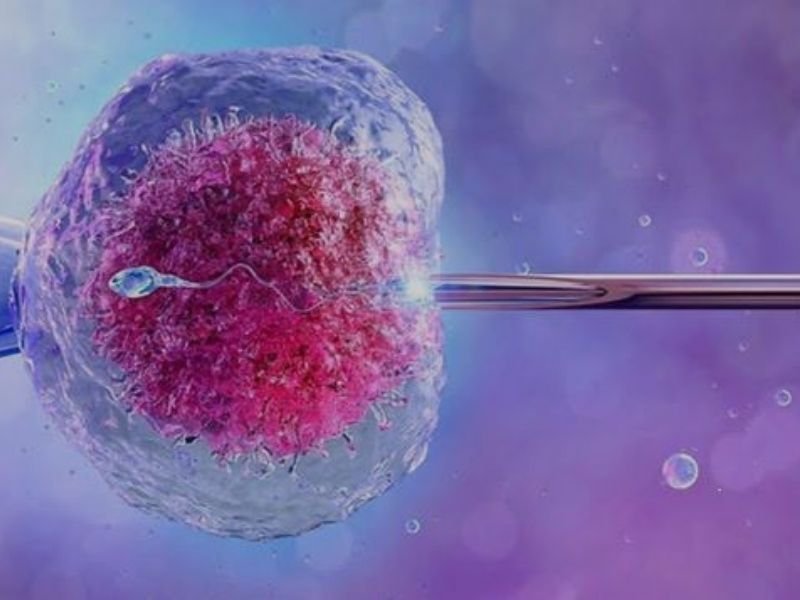Ensuring the safety of sperm, eggs, and embryos is critical for the success of an IVF (In Vitro Fertilization) procedure. From the initial collection of reproductive cells to the delicate process of fertilization and embryo development, each step requires careful handling and advanced technology to protect these precious elements. At our clinic, we prioritize the highest standards of safety and precision, utilizing cutting-edge techniques to safeguard sperm, eggs, and embryos throughout the entire process. Trust us to support your journey to parenthood with expert care every step of the way. Let’s make your dream of having a family a reality
Considerations in Sperm and Egg Selection
The first and most critical step in IVF treatment is the careful selection of sperm and eggs. The quality of these reproductive cells directly affects the chances of successful fertilization and embryo development. When selecting sperm, specialists look at several key factors, such as sperm count, motility (the ability to swim), morphology (shape and structure), and DNA integrity. A high-quality sperm sample increases the likelihood of successful fertilization. On the other hand, egg quality depends heavily on the woman’s age, ovarian reserve, and general health. Younger women typically produce higher-quality eggs, while those with lower ovarian reserves may face more challenges in IVF. Advanced procedures like ICSI (Intracytoplasmic Sperm Injection) may also be employed when sperm motility or count is low. In this procedure, a single healthy sperm is injected directly into the egg to improve fertilization outcomes. The careful selection of sperm and eggs is crucial for boosting the success rates of IVF, especially in cases involving male infertility or age-related declines in egg quality.
Embryo Development and Monitoring Processes
After sperm fertilizes the egg, the embryo development phase begins—a stage that requires constant monitoring and precision. During this period, embryos are cultured in a specialized incubator that replicates the natural environment of a woman’s uterus. Embryologists closely observe the cell division process, checking for uniformity and the right number of cells at each development stage. A healthy embryo should divide into two, then four, eight, and continue increasing in cell numbers until reaching the blastocyst stage. Each embryo’s progress is documented to determine which embryos are developing normally and which may have abnormalities. Modern technologies like time-lapse imaging allow specialists to monitor the embryos without opening the incubator, thus preserving optimal conditions. Time-lapse systems take continuous pictures of embryos, helping embryologists make more informed decisions when selecting the best embryos for transfer or freezing. This process not only ensures the most viable embryos are used but also minimizes the risk of multiple births by allowing doctors to transfer a single, high-quality embryo at a time.
Laboratory Conditions and Safety Measures in IVF Treatment
The success of an IVF procedure heavily relies on the laboratory environment in which it takes place. IVF labs are meticulously designed to control every factor that could affect the safety and viability of sperm, eggs, and embryos. These state-of-the-art labs are equipped with HEPA filtration systems to remove airborne contaminants, ensuring the air is as clean as possible. Strict control over temperature, humidity, and light exposure is maintained because even slight fluctuations can negatively impact embryo development. Safety protocols are enforced at every step to prevent any possibility of contamination or sample mix-up. This includes the use of barcoding or RFID systems to ensure proper identification of each patient’s biological material. Regular maintenance and calibration of all laboratory equipment are also essential to ensure precision and reliability during the IVF process. Lab technicians adhere to stringent cleanliness and safety protocols, including the use of sterile tools and clothing, to maintain a completely sanitized environment. These measures ensure that all gametes and embryos are handled with the utmost care and precision, reducing the risk of procedural failure and optimizing the chances of successful pregnancy outcomes.
Safe Icing and Storage Methods
Cryopreservation, or the freezing of reproductive cells and embryos, is a common and vital process in IVF treatments, allowing patients to preserve their fertility for future use. Whether freezing eggs, sperm, or embryos, the process must be carried out with the utmost precision to ensure long-term viability. Vitrification, a technique that involves ultra-rapid freezing, has revolutionized cryopreservation. Unlike traditional slow freezing methods, vitrification prevents the formation of ice crystals that could otherwise damage the delicate cellular structure of eggs, sperm, or embryos. Once vitrified, the reproductive material is stored in tanks filled with liquid nitrogen at temperatures as low as -196°C. This extreme cold keeps the cells in a state of suspended animation, where they can remain viable for years, or even decades, until the patient is ready for their IVF cycle. During storage, constant monitoring of the temperature and tank conditions is conducted to ensure the safety of the biological material. In the case of embryo freezing, embryos are stored individually and securely, with strict labeling protocols in place to prevent any errors. These advanced freezing techniques offer patients the flexibility to delay IVF cycles or plan future pregnancies, with a high rate of success when using frozen embryos or eggs in later treatments.
In scenarios where patients opt for IVF with donor eggs, the same safety measures apply. Donor eggs are carefully selected and screened for genetic and health factors to ensure optimal quality. The use of donor eggs can be an excellent option for women facing age-related fertility issues, early menopause, or those with conditions affecting their egg quality. Donor eggs undergo the same strict processes of selection, vitrification, and storage as patient eggs, ensuring that the highest standards of care are maintained throughout the entire procedure. At our clinic, we are dedicated to providing personalized, compassionate care, whether you’re using your own eggs or donor eggs, ensuring a safe, effective IVF experience.


